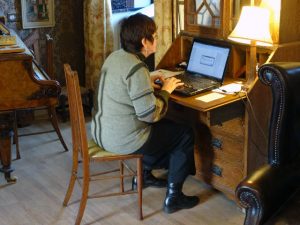Advanced technologies in the healthcare niche such as GPS, motion-sensors and social networks that are senior focused might help seniors keep living comfortable in their homes. Medicaid and Medicare – two of the most powerful government agencies in the US – are aiming to develop cost efficient alternatives for nursing homes and assisted living facilities. Many tech-savvy families wish for their loved ones to live nearby and thus be able to balance their personal lifestyles with caregiving. Fortunately, technology is here to help.
General costs for assisted living and nursing home care keep increasing. The rates are incredibly high, whereas the general cost of at-home senior care has boosted with less than 1% in the last 5 years. At a national scale, the median cost for nursing homes increased to roughly $85,000 in 2013 as opposed to $63,000 in 2012. Furthermore, nearly 90% of citizens in the US wish to live alone in their homes rather than be placed in an assisted living facility.
Advanced technology makes caregiving a lot easier
Even though IoT (the internet of things), mobile devices, analytics, big data and cloud-based services allow nearly every age category to make use of technology for improved health, it is it is quite obvious that seniors can also reap benefits. That’s certainly good news since people with ages above 65 (41 million in the US), will represent one fifth of US’s population by 2050. By then, the US will have 19 million people above 85. If the country chooses to start using advanced technology now, things will look pretty good in 35 years when the lifestyle of the average senior will be pretty comfortable and laid-back.
Seniors are concerned about their financial, emotional and physical safety
A lot of seniors today fear for their financial, physical and emotional safety. They’re often aware that if their loved ones live nearby, they’ll somehow be compelled to look after them. Fortunately, technology comes to the rescue and eases the job of an adult to take care of his/her aging parent. Family members will be relieved of the burden because savvy gadgets and remote devices allow them to keep a close eye on their loved ones without having to check on them every single day. Experts agree that if more seniors would be open to using advanced technology, they could enjoy a much comfortable lifestyle by themselves.
However, let’s not forget that today’s seniors didn’t grow up tech-savvy. This means that they might feel uncomfortable using technology; because of this developers must consider crafting gadgets that are efficient but also easy to use. Twenty years from now seniors will probably use gadgets just as well as youngsters; but before that happens, the following should be checked out.
- Sensors – advanced patient monitoring. These devices can easily be installed around the house. They send signals alerting caregivers of prospective falls, injuries or skipped meals
- GPS tracking technology – excellent for keeping track of a loved one’s whereabouts.
- Apps – there’s a range of apps you can use to keep an eye on an aging parent. Both communication and monitoring apps are tools caregivers can use to watch over their loved ones. Among some of the most well-known we should mention Philips Lifeline, TrackerAssist, Red Panic Button and 5Star Service.
- Remote monitoring tools – these are targeted at seniors needing regular monitoring. There are lot of devices nowadays that monitor blood glucose, heart rate and blood pressure.
- Telehealth – the ability of modern telehealth systems is to use standard video-conferencing and phone systems to connect senior patients with nurse practitioners, physicians and mental health specialists. Furthermore, recent research highlights some pretty advanced technologies; these are meant to change the way seniors get regular checkups.
Seniors have realistic chances of living comfortably in their homes in spite of their health issues. Advanced technology can help them. The tools currently available are quite useful and innovative; however, caregivers must teach them how to use them. Very few seniors find residential care homes and assisted living facilities a viable lifestyle alternative. They don’t want to leave the comfort of their homes, but they’re quite aware that they can’t do everything alone either.

